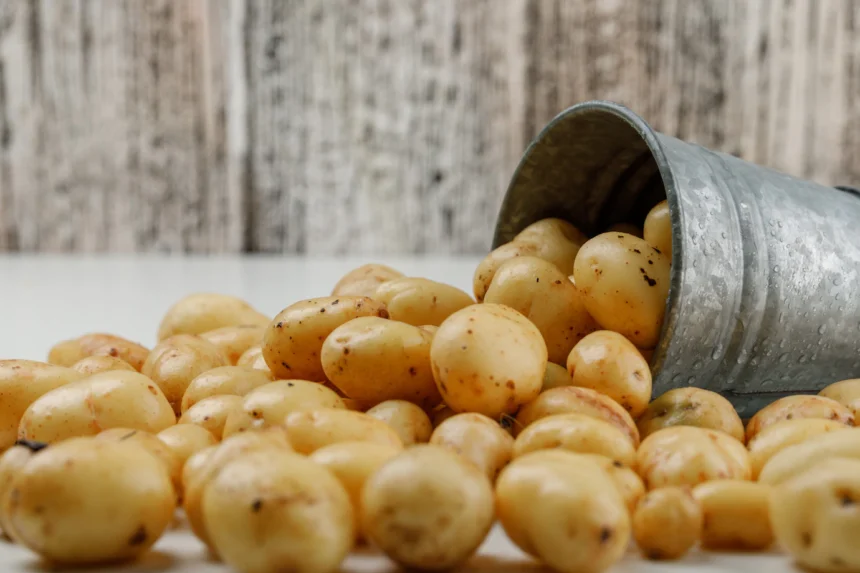Late blight is a destructive and highly contagious plant disease that affects potatoes and other members of the Solanaceae family, such as tomatoes. It is caused by the fungal-like organism Phytophthora infestans. Late blight can cause significant crop losses if not managed properly. Here are the symptoms of late blight that you should look out for in potatoes:
- Leaf Lesions: Look for large, irregularly shaped, water-soaked lesions on the leaves. These lesions are initially dark green and then turn brown to purplish-black. The lesions may also have a pale green to yellow border.
- Stem Lesions: Late blight can also affect the stems of potato plants. Look for dark, irregularly shaped lesions on the stems. The lesions may appear water-soaked and can expand rapidly, causing the stems to become dark and brittle.
- White Fuzzy Growth: Under humid conditions, a white, fuzzy growth may appear on the undersides of the leaves, particularly near the lesions. This growth consists of the spores of the late blight pathogen and is a characteristic sign of the disease.
- Fruit Rot: Late blight can also affect the potato tubers. Look for dark, firm lesions on the skin of the tubers. These lesions can quickly spread, causing the entire tuber to decay. The decayed tissue may have a watery or corky appearance.
- Rapid Disease Progression: Late blight can spread rapidly, especially under cool and humid conditions. Infected plants can show a rapid decline, with leaves and stems wilting and dying within a short period of time.
It is important to note that early detection is crucial for managing late blight effectively. If you observe any of these symptoms in your potato plants, it is recommended to take immediate action, such as applying appropriate fungicides and removing infected plant material to prevent the disease from spreading to other plants. Consult with a local agricultural extension office or a plant disease specialist for specific guidance on managing late blight in your area.









